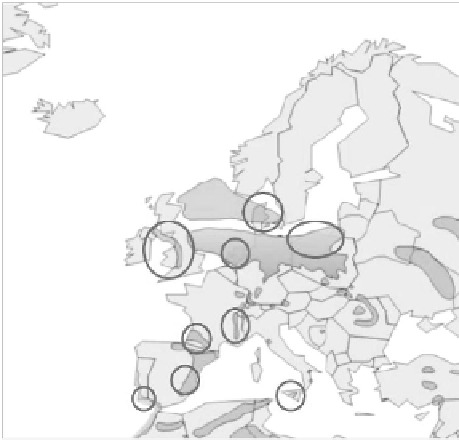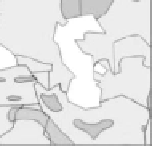Environmental Engineering Reference
In-Depth Information
the resulting brine are available [1,2]. Furthermore, due to the elasto-plastic
properties of salt, storage reservoirs solution-mined from salt pose minimal
risk of air leakage [34,37]. However, brine disposal, cavern “rat holes,” creep,
and turbine contamination remain potential challenges [32].
Large bedded salt deposits are available in areas of the Central, North
Central and North East United States and domal formations can be found
in the Gulf Coast basin [38]. Although both formation types can be used for
CAES, salt beds are often more challenging to develop when large storage
volumes are required. Salt beds tend to be much thinner and often contain
comparatively higher concentrations of impurities that present significant
challenges with respect to structural stability [38]. Caverns mined from salt
domes can be tall and narrow with minimal roof spans as is the case at both
the Huntorf (see Figure 5.4) and McIntosh CAES facilities. The thinner salt
beds cannot support long aspect ratio designs because the air pressure must
support much larger roof spans. In addition, impurities may further compro-
mise the structural integrity of a cavern and further complicate the develop-
ment a large capacity storage system.
Although the locations of domal formations in the United States are not
well correlated with high quality wind resources (see Figure 5.7), there
are some indications the prospects may be more favorable in Europe (see
Figure 5.5).
Folle
FIGURE 5.5
Coincidence of high wind potential and salt domes in Europe. Circles indicate areas investi-
gated for CAES development. (From B. Calaminus, Innovative adiabatic compressed air energy
storage system of EnBW in Lower Saxony, Second International Renewable Energy Storage
Conference, Bonn, 2007.)



